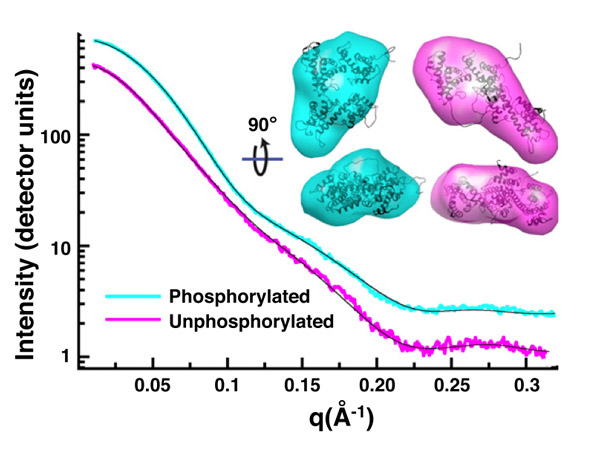Mechanism of Activation/Deactivation of Retinoblastoma Protein
SAXS was used to characterize the structural effects of phosphorylation events that modulate the ability of retinoblastoma protein to associate with E2F and other proteins. This work has been published in Genes & Development in the May 8th Advanced Online Articles section.

>Cyclin-dependent kinase (Cdk) phosphorylation of the Retinoblastoma protein (Rb) drives cell proliferation through inhibition of Rb complexes with E2F transcription factors and other regulatory proteins. We present the first structures of phosphorylated Rb that reveal the mechanism of its inactivation. S608 phosphorylation orders a flexible ”pocket” domain loop such that it mimics and directly blocks E2F transactivation domain (E2FTD) binding. T373 phosphorylation induces a global conformational change that associates the pocket and N-terminal domains (RbN). This first multidomain Rb structure demonstrates a novel role for RbN in allosterically inhibiting the E2FTD-pocket association and protein binding to the pocket ”LxCxE” site. Together, these structures detail the regulatory mechanism for a canonical growth-repressive complex and provide a novel example of how multisite Cdk phosphorylation induces diverse structural changes to influence cell cycle signaling.